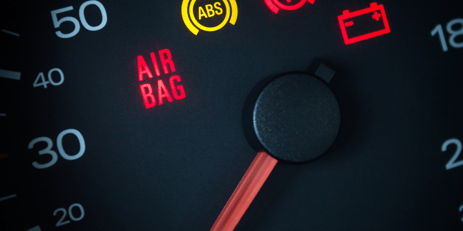When car shopping, what feature is most important to you? Maybe you prefer something that gets good gas mileage. Or you care about the look and feel of the car, like the color and interior. Arguably, the part you may interact with and, therefore, should care about the most is the dashboard.
The dashboard is the user interface of vehicles, from boats and RVs to minivans. Over time, dashboards have undergone significant transformations, adapting to technological advancements and consumer demands. Cassette players have been replaced with Bluetooth capabilities. Touch screen displays for radio and climate control are increasingly popular. But one thing on all dashboards has remained constant: dials and gauges. Dials and gauges are not only aesthetically important but also provide operators with crucial information.
Early Dashboards and Analog Gauges
The birth of the automobile dashboard marked a pivotal moment in automotive history. As vehicles evolved, analog gauges were introduced to provide crucial information to drivers. These gauges, such as speedometers and fuel level indicators, served as vital instruments for monitoring the vehicle's performance. However, early dashboard designs faced several challenges in terms of functionality and aesthetics. Creating analog dials and gauges relied heavily on manual labor and craftsmanship until screen printing was introduced.

Screen-Printed Dials and Gauges: How They Work
Screen printing, a technique used to create visual elements on various surfaces, found its way into dial and gauge design. By utilizing this method, vehicle manufacturers achieved highly detailed and accurate dials and gauges at scale. Screen printing provides consistent and repeatable parts. The screen-printing process involves transferring ink onto a substrate through a mesh screen. This technique ensures durability, readability, and customization options for dashboard displays. Additionally, screen printing allows for improved visibility and legibility, even in varying lighting conditions.
Advancements in Screen Printing Technology
Advancements in materials and inks have revolutionized screen-printing technology for dashboards. Modern screen-printed dials and gauges offer superior durability and longevity compared to traditional methods. Utilizing specialized inks and coatings ensures resistance against fading, scratches, and wear. Moreover, manufacturers can now explore various design possibilities and customization options, providing drivers with personalized dashboard experiences.
Customization Options for Dials and Gauges
Screen printing dials and gauges allow for more customization options and enhance the user-friendliness of dashboard displays. Manufacturers can choose different colors to match their brand aesthetic. Metallic and glossy finishes are also available for an added touch. Backlighting is a common feature of many dials and gauges. LEDs can be added to allow for the alert messages to pop up and notify the operator.

Transition to Digital Displays
Traditional analog gauges remained relatively unchanged until the 1970s. The advent of digital technology brought about a significant shift in dashboard design. Digital displays started making their presence felt, gradually replacing analog gauges. These digital displays offered numerous advantages, including enhanced readability and flexibility in presenting information. Digital dials and gauges rely on sensors to pick up information. However, there is often a lag between when the data is collected and when it is presented on the screen. Analog gauges can be combined with digital displays to provide security in case of failure of the digital screen.
Future Trends in Dashboard Design
As automotive technology continues to advance, dashboard design is expected to undergo further transformations. The rise of autonomous driving and connected technologies presents exciting prospects for the future of dashboards. Augmented reality (AR) integration may enable the projection of real-time information onto windshields, eliminating the need for traditional dashboard displays. Furthermore, advancements in artificial intelligence (AI) may contribute to highly personalized and intuitive driving experiences, with dashboards adapting dynamically to driver preferences and requirements.
Whether you are looking for simple and reliable gauges for boats or UTVs or complex gauge clusters for modern vehicles that mix digital and analog technology, Butler Technologies has the engineering experience and manufacturing capabilities to produce your custom parts.
